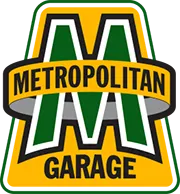Why Do Winter Engine Heaters Need Routine Maintenance?
Winter engine heaters are not stock. Vehicle manufacturers do not install engine heaters or even present the option to buyers. The most these manufacturers do to prepare mechanically for northern climates is to provide a receptacle on the engine that can receive an element style heater.
There are also manufacturers that entirely ignore the need for supplemental heat to the key drive-train and power plant elements of vehicles like the engine block and transmission or transaxle.
Liquids vs. Solids
Why do cars even need winter engine heaters? Simply put, the answer is circulation. Vehicle systems depend on the concept of fluid circulation to protect the thousands of moving parts inside these components.
Engine coolant is responsible for pre-heating the engine block during cold weather, as well as cooling the engine block when the vehicle is running. Coolant will both freeze solid and turn to a slurry of ice and liquid that cannot be circulated by a pump. This results in seized components and big repairs.
Engine oil and transmission fluid are other examples of liquids that need to retain the capacity to circulate easily within systems. These fluids are viscous at above freezing temperatures. When temperatures drop, however, they become tar or molasses like and lose the ability to lubricate or cool sensitive parts.
Local Installers
In northern climates we depend on local mechanics to outfit vehicles with the correct winter heaters. This local knowledge ensures the right fit and application.
Parts Sourcing
People who have purchased new Toyota vehicles this year have had to face a harsh reality: The supplier has not kept up with the manufacture of winter heaters for many of the new engines. A legal action taken against a subcontractor that manufacturers their heaters has caused production to cease. If you have a Toyota that can’t be winterized, there are workaround solutions. Most mechanics are innovative, curious and remarkably handy and have designed ways to get the job done at least temporarily.
Some manufacturers simply don’t address the need for supplemental winter heat. In these cases there are external circulating pumps and various pad heat options that will protect mechanical systems that are vulnerable to the cold.
What are The Parts of a “Winter Engine Heater?”
Great Question! There are generally five different components to an engine heater system:
Part 1 Engine Block Heater. This is a heating element (like the one in your electric water heater).
Part 2 Oil Pan Heater. This is a flat silicone pad with a heating element in it, similar to an electric blanket. Pad heaters are glued to the bottom of the oil pan with a heat-resistant adhesive. These heaters melt hard oil and allow it to be pumped.
Part 3 Transmission Pan Heater. This isn’t an engine heater at all, but we lump them in the same category with “engine heaters”. Similar to your engine oil pan heater, the transmission heater adheres to the transmission oil pan, melting transmission fluid and allowing it to move through the pumping mechanism when the car starts.
Part 4 (optional depending on your situation) Trickle Charger. Battery trickle chargers are handy because they provide a slight charge to the battery in order to keep it fresh if the vehicle is not driven on a regular basis.
Part 5 Junction Box or Three-Way plug. This is the artistic part of the winter heater installation. If you are familiar with the Medusa effect of any cable set up for a TV or computer, this is no different. Every winter heater has a chord that needs to be carefully routed past moving parts and burning hot exhaust pipes. It has to braid into one “pig-tail” that can be plugged and unplugged in the dark and cold, on average about 150 times per winter. This set up also has to survive thousands of summer miles over dirt and rocks without abrasion.
Winter Heater Maintenance is more than once a year.
Winter Heaters wear out, mid winter. We don’t know what it is about the month of November, but winter heaters that were going strong in September or October, can give up the ghost suddenly by Thanksgiving. It is hard for drivers to notice when one of the three heaters has gone out, or is getting weak. Here are some symptoms to look for:
- Fluctuations in the temperature outside do not coincide with engine sluggishness. In November, Fairbanks temperatures can fluctuate between 40 above and forty below. Eighty degrees difference will have a big impact on how easily your engine turns over and starts. If it is 10 above and your car has the same sound as when it starts at -40, this is a tell-tale symptom of failed heaters.
- Blown breakers. If you plug in your car and it sometimes blows the breaker and sometimes does not, this is a clear indication that the engine heater system has a failed component.
- Slow to shift. If you notice a lag in shifting, or if your car does not immediately shift into gear when you engage the shift lever, this could be due to the transmission pad heater having failed.
Why Plug In?
Here are five great reasons to plug your car in two hours before you start it, any time of day or night:
- You’ll get heat inside the vehicle way faster.
- Your windshield will defrost much sooner.
- Your engine will last longer.
- You will get fewer noxious emissions on your property and in the vehicle cabin itself.
- You really are cutting down on emissions for yourself, your neighbors and your planet.
If your winter heaters have not been inspected, or you are not certain the installation was a thoughtful one in the first place, come see us. We are artists with winter heater installation!

